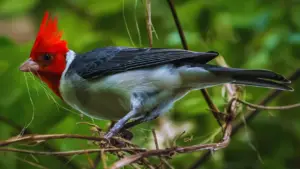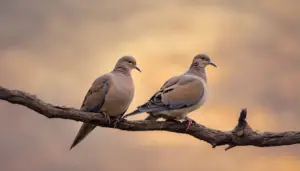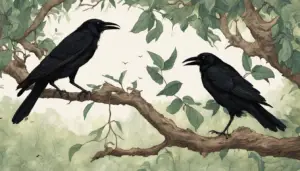Exploring the hunting habits of hawks: Do hawks eat snakes? Uncover the intriguing relationship between hawks and snakes as we delve into the predatory nature of these raptors and their potential role in controlling snake populations.
If you’re curious about hawks and their diet, you may be wondering if they eat snakes. Hawks are fascinating birds of prey known for their sharp talons and hooked beaks. As hunters, they typically prey on small mammals and birds, but what about snakes?
In this article, we’ll explore the behavior and habits of hawks and their relationship with snakes. You’ll discover whether or not hawks do, in fact, eat snakes and the factors that influence their predatory choices. We’ll also examine the ecological importance of hawks and their impact on maintaining balance within ecosystems.
Key Takeaways:
- Hawks are birds of prey known for their hunting skills and sharp talons.
- They typically prey on small mammals and birds, but their diet may vary based on several factors.
- We’ll explore the relationship between hawks and snakes to discover whether or not hawks eat snakes.
- The ecological importance of hawks in maintaining balance within ecosystems will also be discussed.
Understanding Hawk Hunting Behavior
Before we can delve into whether hawks eat snakes, it is important to understand their hunting behavior. Hawks are skilled predators known for their keen eyesight, speed, and agility. They are able to spot prey from high in the sky and swoop down to catch it with precision.
Most hawks are diurnal hunters, meaning they hunt during the day. They typically hunt from a perch and will swoop down to catch prey on the ground or in the air. Some larger hawks, such as the red-tailed hawk, may also hunt from the air, using their keen eyesight to spot prey from above.
Understanding Hawk Hunting Behavior:
| Hunting Behavior | Description |
|---|---|
| Keen Eyesight | Hawks have excellent eyesight, allowing them to spot prey from great distances. |
| Speed | Hawks are able to fly at high speeds, making it easier for them to catch prey. |
| Agility | Hawks are incredibly agile and can make quick turns in pursuit of prey. |
Overall, hawks are opportunistic hunters, meaning they will eat whatever prey is available to them. However, their preferred prey tends to be small mammals and birds, such as mice, squirrels, and rabbits. Now that we understand their hunting behavior, let’s explore the question of whether hawks eat snakes.
Snake Predation by Hawks
Hawks are known for their predatory behavior, and they have been observed preying on snakes. However, this behavior is not common among all species of hawks, and there are several factors that influence their decision to hunt snakes.
Firstly, hawks are opportunistic hunters and will prey on whatever is most readily available in their habitat. This means that if snakes are abundant in a particular area, hawks are more likely to include them in their diet.
Secondly, the size of the snake is an important factor in determining whether a hawk will hunt it. Most species of hawks prefer to hunt small mammals and birds, as they are easier to catch and provide a more substantial meal. However, some larger species of hawks, such as the Red-tailed Hawk, have been known to hunt larger snakes.
Another important factor is the habitat of the hawk. Hawks that live near bodies of water, such as marshes or wetlands, are more likely to hunt snakes, as they are a common prey item in these habitats.
“Hawks that live near bodies of water, such as marshes or wetlands, are more likely to hunt snakes.”
It is also worth noting that not all species of snakes are easy prey for hawks. Some snakes, such as those with potent venom or those that are large and strong, may pose a significant threat to hawks and are therefore avoided.
Overall, while hawks do occasionally prey on snakes, it is not a common occurrence and is highly dependent on the specific species of hawk, their habitat, and the availability of other prey items.
Predatory Habits of Hawks
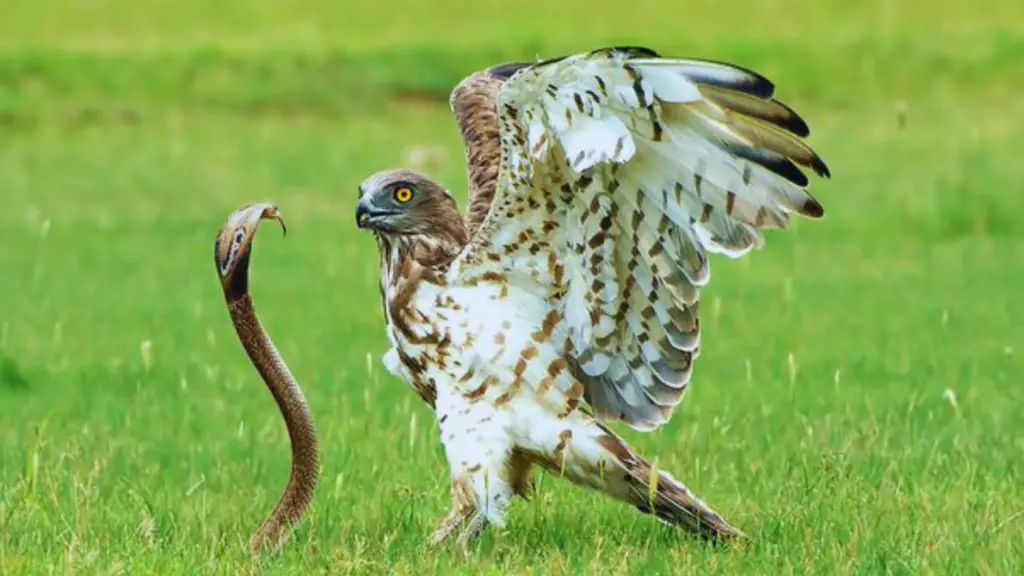
When it comes to hunting, hawks are incredibly efficient predators. Their sharp talons and powerful beaks allow them to take down prey much larger than themselves, but what do they typically go after?
Hawks are known to have a varied diet that can include small mammals and birds, as well as reptiles and insects. They are particularly fond of rodents, such as mice and voles, and also commonly target squirrels, rabbits, and other small mammals.
Although not their preferred prey, hawks have been observed consuming snakes on occasion. While it may seem surprising, the behavior is not uncommon and may depend on a number of factors.
It is important to note that different species of hawks have different feeding habits, and some are more likely to consume snakes than others. Factors such as habitat, location, and availability of prey can also influence a hawk’s choice of food.
Overall, while snakes are not a staple in their diet, hawks may still play an important role in controlling snake populations in certain areas. Understanding their predatory habits and feeding behavior can shed light on their ecological significance and impact on local ecosystems.
Hawk Diet: What Do They Typically Eat?
Hawks are carnivorous birds that primarily feed on small mammals and birds. Their diet varies depending on their habitat, size, and hunting behavior.
The most common prey for hawks are rodents such as mice, voles, and rats. They also prey on larger mammals such as squirrels, rabbits, and hares. In addition to mammals, hawks also hunt small birds such as sparrows, finches, and doves.
Hawks are known for their incredible hunting skills, which include their sharp eyesight, speed, and agility. They scan the ground for potential prey and can spot their target from hundreds of feet in the air. Once they spot their prey, they descend rapidly and grab it with their sharp talons.
Although hawks are primarily known for hunting mammals and birds, they are also known to occasionally prey on reptiles such as snakes. However, snake consumption is not a regular part of their diet and is relatively rare.
Overall, the diet of hawks is diverse and highly adaptable, which allows them to thrive in a variety of environments and ecosystems. Their hunting behavior and prey preferences play a crucial role in maintaining ecological balance and controlling populations of small mammals and birds.
Snake as Prey for Hawks
While hawks are known to primarily prey on small mammals and birds, there are instances where they also consume snakes. However, it’s important to note that not all species of hawks may show a preference for this kind of prey.
Studies have shown that the red-tailed hawk, for example, is more likely to hunt small mammals such as rabbits and squirrels. On the other hand, the Cooper’s hawk has been observed to have a greater inclination towards preying on birds than snakes.
Despite this, there have been documented cases of hawks successfully hunting and consuming snakes. Factors that may influence a hawk’s decision to target a snake include the snake’s size, behavior, and location.
It’s worth noting that snakes also have defensive mechanisms that can make them a challenging prey for hawks to capture. Some species of snakes, such as the rattlesnake, have venom that can be dangerous to predators. In response, hawks may display defensive behaviors such as diving or attacking from a distance to avoid being bitten.
In summary, while not all hawks may choose to prey on snakes, there are instances where they capture and consume them. Numerous factors may affect a hawk’s decision to target a snake, and both hawks and snakes have distinctive adaptations that may have an impact on their interactions with one another.
Raptor Feeding Habits
When it comes to hunting and feeding habits, hawks are often grouped together with other birds of prey, such as eagles and falcons. While these raptors share some similar characteristics, they also have distinct differences in their preferred prey and hunting techniques.
One notable difference in feeding habits is the size of the prey targeted. Hawks tend to focus on smaller mammals and birds, such as mice, rabbits, and sparrows, while larger raptors like eagles may hunt larger prey, such as deer or fish. Additionally, hawks are known for their agility and speed during the hunt, using their sharp talons and beak to capture their prey in mid-air or on the ground.
Another key factor in raptor feeding habits is habitat and environment. Some hawks, such as the Red-tailed Hawk, prefer open grasslands, while others, such as the Sharp-shinned Hawk, thrive in dense forested areas. These varying habitats also provide different opportunities for prey, which can influence a hawk’s diet.
Do All Raptors Consume Snakes?
While hawks are known to prey on a variety of small animals, including mice, rabbits, and squirrels, they are not always inclined to consume snakes. In fact, not all raptors consume snakes as part of their diet. Some raptors, such as Barn Owls and some species of eagles, have been observed consuming snakes more frequently than hawks.
However, there are still some hawks that do consume snakes. The Cooper’s Hawk, for example, has been observed preying on smaller snake species such as garter snakes. Additionally, some hawks may consume snakes if other food sources are scarce, or if they are presented with an opportunity that is too good to pass up.
Overall, while hawks may not be the most common consumers of snakes among raptors, they still play an important role in controlling snake populations and maintaining balance within ecosystems.
Hawks as Snake Predators
While hawks are not commonly known to consume snakes, there are instances where they have been observed preying on these reptiles. The exact reasons why hawks may choose to consume snakes are not fully understood, but it could be influenced by a variety of factors.
One possible explanation for this behavior is that hawks may consume snakes when other prey options are scarce. This could occur in times of difficult weather conditions, when prey populations are low, or in areas where there are limited food sources available. In such situations, hawks may resort to consuming snakes as a survival mechanism.
Another possible factor that may influence snake consumption by hawks is the habitat in which they live. Hawks that reside in areas with a high snake population may have a higher chance of consuming them as part of their diet. Additionally, certain species of hawks may have a greater affinity for snakes than others, which could also play a role in their choice of prey.
Despite the relatively low incidence of hawks consuming snakes, their predation on these reptiles can have important ecological implications. Snakes play a critical role in controlling pest populations, and their decline could have negative consequences for the ecosystem. However, hawks and other birds of prey can help to maintain a balance by consuming snakes and other small predators.
Therefore, while hawks may not be considered typical snake predators, their occasional consumption of these reptiles is an important factor to consider in understanding the role of birds of prey in ecosystems.
Hawk and Snake Interaction
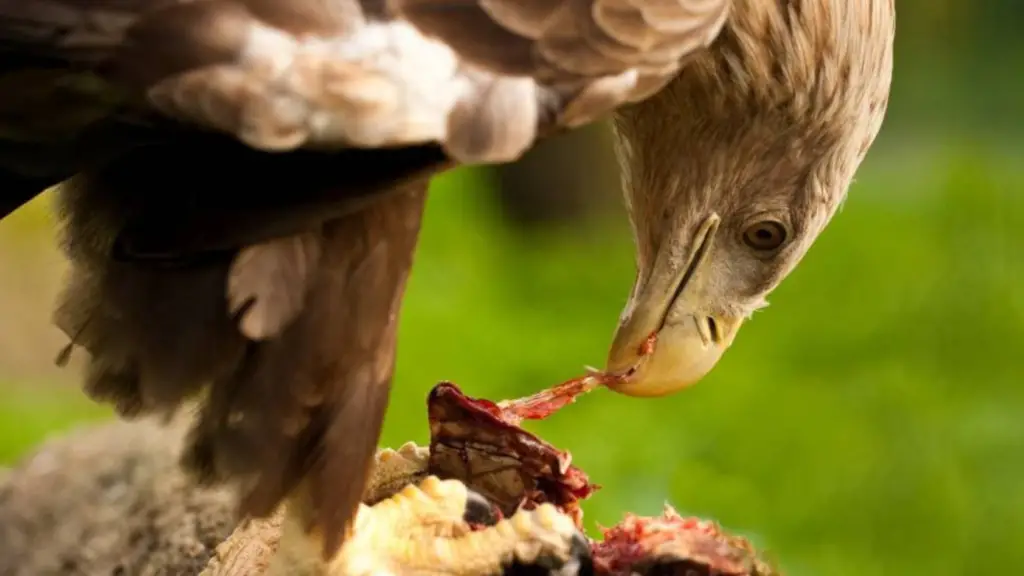
Encounters between hawks and snakes can be fascinating to observe. While hawks are known to feed on a variety of prey, including small mammals and birds, they may also prey on snakes depending on certain factors.
When hawks hunt snakes, they often use their sharp talons to grab the snake and kill it with a powerful bite to the head or neck. However, some snakes have developed defensive behaviors against these predators, such as coiling up and striking back with venomous bites.
Interesting fact: The red-tailed hawk, a common species found in North America, is known to hunt snakes such as garter snakes and rattlesnakes.
It’s important to note that not all hawks are snake predators, and their interactions with snakes vary depending on the species of hawk and the type of snake. Factors such as availability of prey and habitat can also influence a hawk’s choice of prey.
Observing the interactions between a hawk and a snake can also provide insight into the delicate balance of predator-prey relationships within ecosystems.
Birds of Prey and Snake Consumption
Hawks are not the only birds of prey known to consume snakes. Other raptors, including eagles, falcons, and owls, have also been observed hunting and feeding on snakes.
The snake consumption habits of other birds of prey vary widely. Some, such as the Secretary Bird, specialize in hunting snakes on the ground, while others, like the Osprey, prefer to hunt fish near bodies of water.
One bird of prey that shares a similar diet with hawks is both the Red-tailed Hawk and the Red-shouldered Hawk, both of which frequently feed on snakes in addition to other small mammals and birds.
Like hawks, most birds of prey use their sharp talons to capture and kill their prey. Some, like the Bald Eagle, have even been known to work together to catch large snakes.
Interesting Fact:
Prairie Falcons have been observed using a unique hunting strategy to catch snakes. They will hover over a snake, waiting for it to strike, then swoop down and grab it in mid-air before it can retreat.
The Role of Hawks in Ecosystems
Hawks are an important part of many ecosystems, playing a vital role in maintaining balance. As top predators, they control populations of small mammals and birds, preventing them from overpopulating and damaging the ecosystem. In this way, hawks help to maintain a healthy and diverse community of plants and animals.
However, hawks themselves are also subject to regulation by the ecosystem. For example, if their prey populations decline, hawks may be forced to hunt less efficiently or to switch to different prey. This can have a cascading effect on the rest of the ecosystem, affecting other species and potentially causing imbalances.
Falconry and Hawk Conservation
Hawks have been used in falconry for centuries, and the practice continues today in many parts of the world. However, it is important that falconers abide by laws and regulations designed to protect hawks and their populations. Many species of hawks are threatened or endangered due to habitat loss, climate change, and other factors, and it is crucial that they receive appropriate protection and conservation efforts.
In addition to falconry, hawks are also important indicators of ecosystem health and are used in research and monitoring programs to track changes in populations and habitats. By understanding the role hawks play in ecosystems, we can better protect these magnificent birds and the environments they inhabit.
Factors Influencing Hawks’ Choice of Prey
Several factors can influence a hawk’s decision on what prey to hunt.
One major factor is the availability of prey in their habitat. Hawks are adaptable predators and will choose to hunt the most abundant prey in their area. For example, if there are more rodents than snakes in a particular habitat, hawks are more likely to hunt rodents.
Another factor is the size of the prey. Hawks typically prefer to hunt prey that is smaller than them. This is because smaller prey are easier to capture and manipulate. However, some larger hawks, such as the red-tailed hawk, will hunt relatively larger prey such as rabbits and squirrels.
The time of day is also an important factor. Hawks are diurnal, which means they hunt during the day. During the day, they rely on their excellent eyesight to spot prey from a distance. As the sun sets, their vision becomes less effective, and hunting becomes more difficult.
The weather can also affect a hawk’s choice of prey. For instance, hawks may find it more difficult to catch small prey that is blowing around in the wind on windy days. During hot weather, hawks may avoid hunting and conserve their energy.
Finally, experience and learning can influence a hawk’s choice of prey. Young hawks may hunt smaller, more manageable prey until they gain experience and confidence in their hunting skills. Older hawks may have more varied hunting experiences and be better able to hunt a wider range of prey.
Conservation Considerations for Hawks and Snakes
As with any predator-prey relationship, the interaction between hawks and snakes has important implications for conservation efforts. In order to ensure the survival of both species, it is important to understand the factors that influence their interactions and to take steps to protect their habitats.
Habitat Preservation
Perhaps the most important conservation consideration for hawks and snakes is the preservation of their habitats. Hawks rely on open spaces and forests, while snakes require a variety of habitats, including wetlands and grasslands.
Human activities such as logging, agriculture, and urban development can have a significant impact on these habitats, leading to habitat loss for both hawks and snakes. Conservation efforts must focus on protecting these habitats and ensuring that they are not fragmented or destroyed.
Illegal Hunting
Another threat to hawks and snakes is illegal hunting. In many parts of the world, hawks and other birds of prey are captured for their feathers and other body parts, and snakes are killed for their skin and meat.
Conservation efforts must focus on ending these practices, which can have a significant impact on populations of both hawks and snakes. This may involve enforcement of existing laws, as well as education and outreach efforts to raise awareness about the importance of protecting these species.
Managing Human-Wildlife Conflict
Finally, conservation efforts must address the issue of human-wildlife conflict that can arise when hawks and snakes come into close proximity to human settlements.
Hawks may prey on domestic poultry or other livestock, while snakes can pose a danger to humans and pets. Effective management of human-wildlife conflict requires the use of non-lethal techniques such as scare tactics and fencing to deter predators, as well as education and outreach to help people understand the importance of these species and how to coexist with them.
By taking these steps to protect hawks and snakes, we can help to ensure the survival of these important species and maintain the delicate balance of ecosystems around the world.
The Surprising Answer: Do Hawks Eat Snakes?
After exploring the hunting behavior and dietary habits of hawks, you may be wondering: do hawks eat snakes? The answer is yes, hawks do eat snakes. While snakes are not a typical part of a hawk’s diet, they have been observed preying upon them in the wild.
However, it is important to note that not all species of hawks consume snakes, and the frequency of such predation may vary depending on the habitat and availability of other prey. Factors such as the size and species of the snake, as well as the size and hunting style of the hawk, may also influence the likelihood of a snake becoming a meal for a hawk.
Despite this, it is clear that hawks play a role in controlling snake populations and maintaining balance within ecosystems. By preying on snakes, they help prevent overpopulation, which can have negative impacts on the surrounding environment.
So, while you may not see a hawk swooping down to grab a snake every day, know that it is indeed possible and a natural part of their predatory behavior.
FAQs About Do Hawks Eat Snakes?
Q: Do hawks eat snakes?
A: Yes, hawks do eat snakes.
Q: What is the hunting behavior of hawks?
A: Hawks hunt using their keen eyesight, speed, and agility.
Q: Are there instances of hawks preying on snakes?
A: Yes, hawks do prey on snakes, although it may not be their primary food source.
Q: What are the predatory habits of hawks?
A: Hawks primarily prefer small mammals and birds as their prey.
Q: What do hawks typically eat?
A: Hawks typically eat rodents, squirrels, rabbits, and birds.
Q: Do hawks include snakes in their diet?
A: While snakes may be a part of a hawk’s diet, it is not their main food source.
Q: How do hawks’ feeding habits compare to other raptors?
A: Hawks’ feeding habits may differ or overlap with other raptors, depending on the species.
Q: What is the role of hawks in controlling snake populations?
A: Hawks play a significant role in keeping snake populations in check, which can benefit ecosystems.
Q: How do hawks interact with snakes?
A: Hawks may engage in defensive behaviors when encountering snakes, depending on the situation.
Q: What is the relationship between birds of prey and snake consumption?
A: Birds of prey, including hawks, exhibit diverse behaviors when it comes to consuming snakes.
Q: What is the ecological role of hawks?
A: Hawks play a crucial role in maintaining the balance within ecosystems by controlling prey populations.
Q: What factors influence a hawk’s choice of prey?
A: Various factors such as availability, habitat, and hunting efficiency influence a hawk’s choice of prey.
Q: What are the conservation considerations for hawks and snakes?
A: Conservation efforts should focus on habitat preservation and protection to ensure the survival of hawks and their prey, including snakes.
Q: Do hawks eat snakes? What’s the answer?
A: Yes, hawks do eat snakes.






